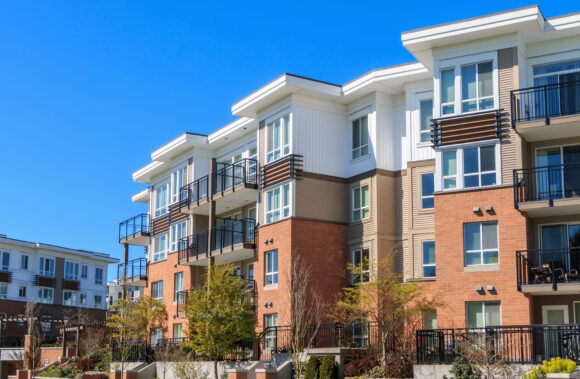While most personal and commercial insurance lines have streamlined or overhauled workflows through digital transformation in the last decade, habitational insurance remains a heavy lift for agents today.
The reason technology hasn’t reached this line as much as workers’ compensation, for example, is a matter of both priority and capability. Insurance carriers, MGAs, and startups can only focus resources in limited areas, so multi-family property including HOA, condo or apartment building insurance have fallen through the cracks with middling policies of $3,000 to $7,000 a year.
Underwriting complexity is also much higher than other comparable lines of insurance. However, these policies collectively represent a $22 billion U.S. market, according to a report published by the Foundation for Community Association Research. This line of business cannot afford to be marginalized.
Below are some of the ways that habitational insurance must catch up with the rest of the insurance industry to improve both the agent and customer experience.
Big Data and AI
One impactful way to bring habitational insurance into the digital age is by reducing or eliminating manual underwriting for most policies. It isn’t like we haven’t seen this work before in other lines. Workers’ compensation was the first true business insurance case study of how big data and predictive analytics improve the speed and accuracy of risk selection and pricing. The technology can be used in habitational to bring the same types of benefits and solve familiar problems.
Multi-family property policies are complex, yet too small to justify heavy investment in manual underwriting, which leads to broad brush risk assessment and often blanket restrictions on certain regions, building ages, or types. The result is a lack of policy customization where good risks end up subsidizing the bad and promote unfair pricing practices.
For example, a property three blocks from another that experienced three fire incidents in the last five years is likely to be priced similarly to one with zero fire incidents. Using predictive analytics and AI to underwrite habitational will introduce more granular, personalized pricing practices for insureds and allow agents to see a customer’s new premium immediately after making policy tweaks. This instant customization effectively takes a week’s worth of back-and-forth and turns it into a minutes-long process. Agents should not have to endure lengthy internal processes comprising manual forms, long underwriting reviews, and too much “baton passing” between insurer, agent, and customer.
DIY Property Inspections
Physical property inspection delays policy binding further and can be expensive to perform at scale. Do-it-yourself property owner inspections through an app, akin to Lemonade and other modern personal lines offerings, would be instrumental in keeping customers happy and shorten the sales cycle for agents. While AI is still maturing, it is certainly capable of ingesting image data of risk-indicative building features, such as water heater conditions, stairwells, structural issues, and roof shape and materials; things that are traditionally checked by humans on premises. Bringing AI to this industry won’t just improve the customer experience by reducing quote-to-bind timing, it will finally bring agents’ time more in line with their limited commission on general liability HOA/COA policies.
Creating Touchpoints
A challenging area for both agents and insurers in commercial lines is creating additional valuable customer touch points. Insurance is naturally a low engagement product; if an agent does a “good job” they typically only hear from their customer at the time of purchase and renewal with very little contact in between. Especially in habitational, where purchasing a policy is oft-forgotten except for the bill, an app can bring more value than just remote inspection capabilities. It unlocks new opportunities for agents to meaningfully engage with their customers. For example, agents can provide frequent risk mitigation tips, send reminders of routine upkeep that can reduce costs, and even recommend additional insurance protections. The recent Surfside Collapse that left nearly 100 dead is a major wake-up call that insureds benefit from being reminded about their responsibilities to HOAs or condos with respect to coverage and maintenance.
Multi-family property insurance is ripe for digital transformation. Bringing online distribution enabled by AI-based underwriting and inspections will make agents’ lives easier, improve customer loyalty, and ultimately reduce the friction for all involved.
Was this article valuable?
Here are more articles you may enjoy.



 Abundant Reinsurance Capacity Accelerates Market Softening During 1/1 Renewals
Abundant Reinsurance Capacity Accelerates Market Softening During 1/1 Renewals  FBI Involved After Two Florida Injury Lawyers Go Missing From Fishing Trip
FBI Involved After Two Florida Injury Lawyers Go Missing From Fishing Trip  Aon Extends Employment Agreement With CEO Case
Aon Extends Employment Agreement With CEO Case  Freight Broker Says $400K in Lobster Meat Stolen in Fictitious Pickup
Freight Broker Says $400K in Lobster Meat Stolen in Fictitious Pickup 



